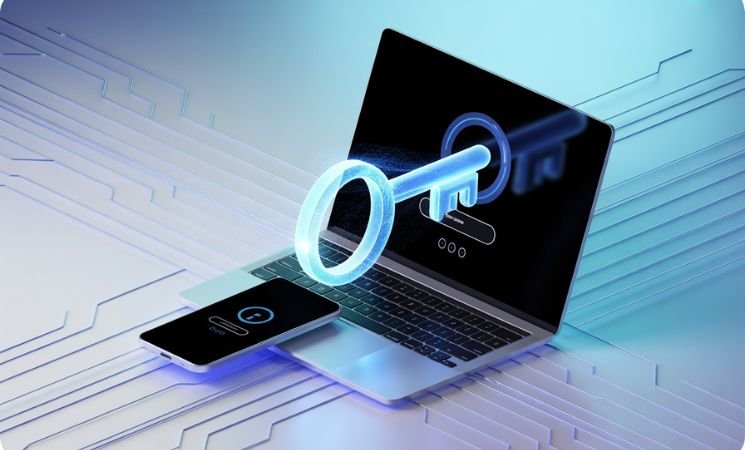The RTX 5090 and 5090D are NVIDIA’s most powerful cards to date—but they come with unexpected risks. Many users have reported their brand-new GPUs suddenly “bricking”—leaving them with dead cards, black screens, or fans that never spin up. This guide dives into why it happens, what to do, and how to avoid it.
What Does “Bricked” Mean for Your GPU?
If your RTX 5090 or 5090D is “bricked,” it doesn’t boot, display output, or get detected by the system. It’s either soft-bricked (firmware corrupted) or hard-bricked (physical damage). In both cases, the GPU becomes useless unless you can reflash it or get it replaced.
Why RTX 5090 / 5090D GPUs Are Getting Bricked?
Not all users face this problem—but those who do are usually early adopters, overclockers, or users with legacy hardware setups. The RTX 5090D, with its dual-BIOS system, appears especially prone to bricking due to improper switching, faulty drivers, or overheating VRMs.
We’ve pulled together issues not only from official sources but also real-world Reddit reports and PC hardware communities.
Patterns from Community Reports
The table below outlines the most commonly reported patterns of RTX 5090 bricking along with suspected causes and suggested fixes:
| Issue Pattern | Likely Cause | Suggested Fix |
| Driver update bricked card | Secure Boot conflict | Safe Mode + DDU + firmware reflash |
| BIOS switch killed 5090D | Switched while powered on | Use SPI flasher or try 2nd BIOS |
| No fan or display on boot | Weak PSU or bad cable | Replace PSU/cables, test in another PC |
| Black screen after install | GPU not seated or overheating | Reseat GPU, check temps |
| Card not detected in system | Corrupt VBIOS or EEPROM issue | Blind flash or reprogram EEPROM |
| 12VHPWR cable melted | Low-quality adapter used | Use native ATX 3.0 PSU cable |
Each row represents real issues discussed in forums like Reddit, TomsHardware, and NVIDIA support.
Common Causes and How to Fix Them
Driver & UEFI Conflicts
Many users experienced bricking right after a fresh driver install. The root cause? A clash between NVIDIA drivers and UEFI Secure Boot. This usually occurs if Secure Boot is enabled and the system tries to validate unsigned GPU firmware.
Fix: Disable Secure Boot before installing the driver. If bricked, try booting into Safe Mode and use Display Driver Uninstaller (DDU) to reset.
Dual-BIOS Mishaps on 5090D
The RTX 5090D’s BIOS switch is meant for safety—but switching it while the GPU is powered can corrupt both BIOS chips. Multiple Reddit threads report users accidentally flipping the switch mid-operation.
Fix: Never flip BIOS mode while the PC is on. If bricked, try the secondary BIOS. If both fail, a SPI flasher or professional reprogramming is needed.
Thermal Issues During First Boot
Some cards were shipped with poorly applied thermal paste or warped heatsinks. This causes overheating, especially in early stress tests, resulting in shutdowns or total bricking.
Fix: Check mounting pressure, apply high-quality thermal paste, and use gradual stress tests instead of full load out of the box.
PSU Incompatibility & Adapter Faults
If you’re using an old PSU with adapter cables instead of native 12VHPWR, you’re at high risk. Inconsistent power delivery or melted connectors have led to bricked cards.
Fix: Use a true ATX 3.0 PSU with a native 600W 12VHPWR cable. Avoid third-party split adapters.
Corrupted Firmware & EEPROM Errors
Some early RTX 5090 units shipped with vulnerable EEPROM chips. A failed driver update or BIOS flash can render the chip unreadable.
Fix: Use hot-swapping EEPROM programming or NVIDIA’s firmware recovery tool (if still detectable via PCIe).
For helpful utilities, check out the GizmoAssist tools page.
How to Check If Your Card Is Bricked?
Look for these signs:
- No display output even after reseating
- Fans don’t spin or spin briefly and stop
- Card isn’t visible in BIOS or Device Manager
- PC restarts when you install the GPU
- Boot loop triggered by driver install
NVIDIA’s Official Stance & Fixes
NVIDIA has acknowledged isolated reports and released a VBIOS updater utility that includes auto-checks for bricked firmware. However, some custom AIB models are not supported.
If your GPU came from ASUS, Gigabyte, or MSI—contact them directly. Several vendors now offer free reflashing if the card is within warranty.
Real-World Prevention Tips (That Actually Work)
Before you even power on your RTX 5090 or 5090D:
- Disable Secure Boot in BIOS
- Ensure motherboard firmware is updated for PCIe Gen 5
- Use native 12VHPWR with ATX 3.0 PSU only
- Install drivers manually, not via Windows Update
- Don’t switch BIOS modes with the system running
- Stress-test gradually—don’t go full load on Day 1
Should You Still Buy the RTX 5090 or 5090D?
Yes, but proceed with caution. Later batches (after Q2 2025) appear to have addressed thermal paste issues and firmware stability. If you’re a gamer or creator who needs unmatched performance, this card is still king—but don’t skip these precautions.
Final Thoughts
The RTX 5090 is a beast—but also a bit of a diva. Handle it right, and you’ll get next-gen performance. Skip the basics, and you could be stuck with a bricked $1,600 GPU. Community reports have helped pinpoint what to do (and not do), so use their experience to protect your card.









